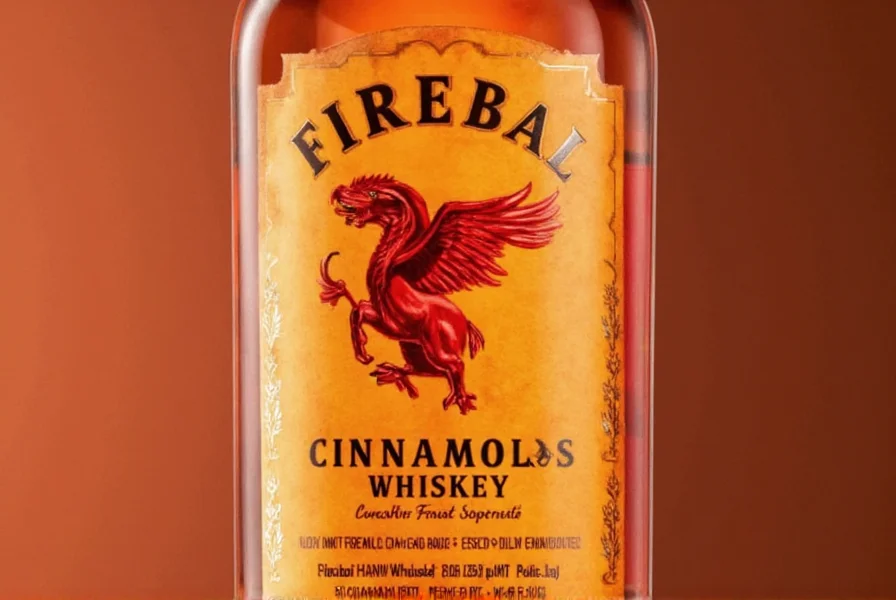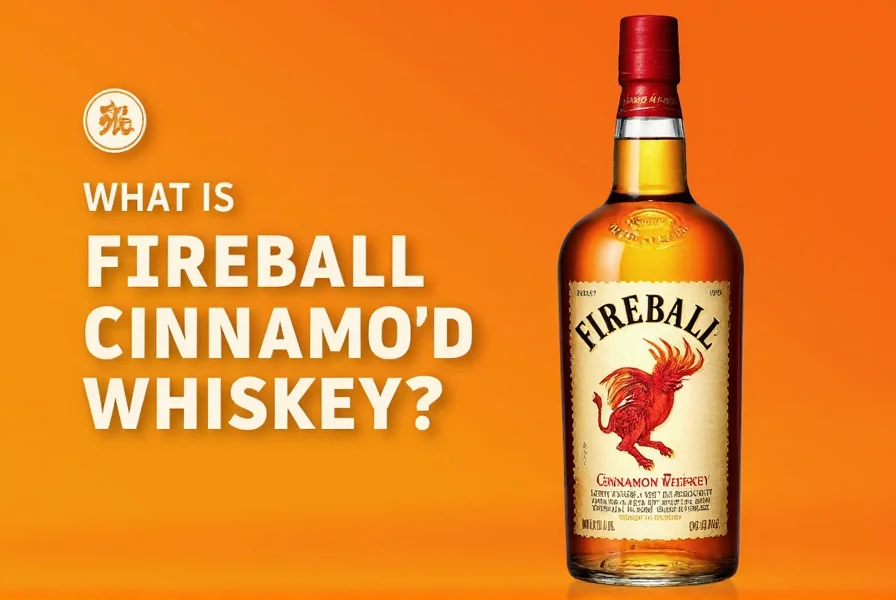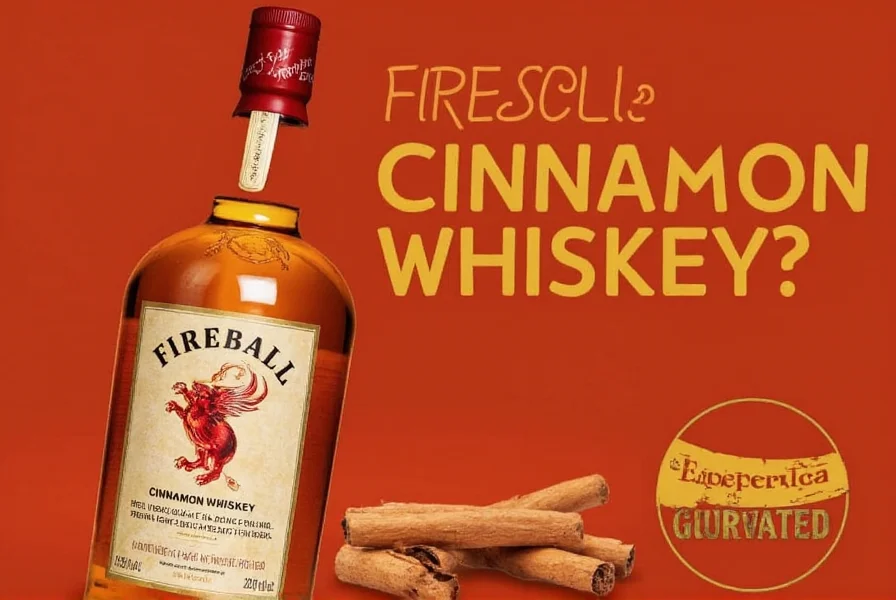Understanding what is fireball cinnamon whiskey requires examining both its composition and cultural impact. This distinctive spirit has carved out a significant niche in the spirits market since its introduction, appealing particularly to those who find traditional whiskey too harsh while still offering a genuine whiskey base.
History and Development
Fireball Cinnamon Whiskey traces its origins to the early 2000s when Canadian bartender John E. Murphy created a cinnamon whiskey recipe at the request of customers who wanted a smoother, more approachable whiskey experience. The recipe was later acquired by the Sazerac Company, which launched it commercially in 2004 under the name Dr. McGillicuddy's Firewater. In 2007, it was rebranded as Fireball Cinnamon Whiskey and began its rapid ascent in popularity.
What started as a niche product grew exponentially through the 2010s, becoming a staple in bars and liquor stores worldwide. By 2016, Fireball had become the best-selling flavored whiskey in the United States, with annual sales exceeding 10 million cases at its peak.
Ingredients and Production Process
When exploring what is fireball cinnamon whiskey made of, the formula combines several key components:
| Component | Details |
|---|---|
| Base Spirit | Canadian whiskey (distilled from grain) |
| Flavoring | Natural cinnamon flavoring (exact blend proprietary) |
| Sweeteners | Sugar and other sweetening agents |
| Alcohol Content | 33% ABV (66 proof) - lower than standard whiskey |
The production process begins with a base of Canadian whiskey, which is then blended with cinnamon flavoring and sweeteners. Unlike some cinnamon-flavored spirits that use actual cinnamon sticks in production, Fireball uses a proprietary cinnamon flavoring formula that creates its distinctive taste profile without the bitterness that can come from direct cinnamon infusion.

Taste Profile and Characteristics
One of the most frequently asked questions when learning what is fireball cinnamon whiskey relates to its distinctive flavor. Fireball delivers a pronounced cinnamon taste with noticeable sweetness, making it significantly different from traditional whiskeys.
The initial flavor is dominated by sweet cinnamon notes, followed by subtle vanilla undertones and a mild whiskey backbone. The finish is warm with a lingering cinnamon sensation but without the intense heat of higher-proof spirits. This approachable profile explains why many consider it an excellent entry point for those new to whiskey.
When comparing how is fireball cinnamon whiskey different from regular whiskey, several key distinctions emerge:
- Lower alcohol content (33% ABV vs. 40-50% for most whiskeys)
- Pronounced sweetness (regular whiskey is typically dry)
- Distinct cinnamon flavor profile (vs. oak, vanilla, caramel notes in traditional whiskey)
- Smooth mouthfeel with less burn
- Different production process (blended liqueur vs. aged distilled spirit)
Popularity and Cultural Impact
Fireball's rise to prominence represents an interesting case study in spirit marketing and consumer preferences. Its popularity surged through social media and word-of-mouth recommendations, particularly among younger drinkers who appreciated its approachable flavor profile.
The "Fireball Challenge" - where participants attempt to drink a shot without reacting to the cinnamon heat - went viral on platforms like YouTube and Vine, significantly boosting the brand's visibility. While the company has distanced itself from such challenges, the viral nature of these videos undoubtedly contributed to Fireball's explosive growth.
Serving Suggestions and Popular Uses
Understanding fireball cinnamon whiskey taste profile helps determine the best ways to enjoy it. While it's commonly consumed as a shot, Fireball's versatility extends to numerous serving methods:
- Neat or on the rocks - for those who enjoy the pure cinnamon flavor
- With apple cider - creating a popular "Cinnamon Apple Pie" cocktail
- In coffee - adding warmth and spice to morning beverages
- With ginger ale - creating a refreshing cinnamon highball
- In baking - used as a flavoring agent in desserts like cinnamon rolls

Safety and Responsible Consumption
Despite its sweet taste and smooth profile, Fireball Cinnamon Whiskey contains 33% alcohol by volume. Its palatable flavor can sometimes mask the alcohol content, potentially leading to overconsumption. As with any alcoholic beverage, it should be consumed responsibly and in moderation.
Those with cinnamon sensitivities should be aware that Fireball contains cinnamon flavoring, though not enough to typically cause reactions in most people with mild sensitivities. Individuals with specific health conditions or taking certain medications should consult with healthcare providers before consuming any alcoholic beverage.
Frequently Asked Questions
What is the alcohol content of Fireball Cinnamon Whiskey?
Fireball Cinnamon Whiskey has an alcohol content of 33% ABV (66 proof), which is lower than standard whiskey (typically 40% ABV/80 proof). This reduced alcohol content contributes to its smoother taste and makes it more approachable for those new to whiskey.
Is Fireball considered a whiskey or a liqueur?
Fireball is technically classified as a whiskey liqueur. While it uses Canadian whiskey as its base, the addition of significant sweeteners and flavorings places it in the liqueur category. This classification explains its lower alcohol content and sweeter profile compared to traditional whiskeys.
Does Fireball Cinnamon Whiskey contain actual cinnamon?
Fireball uses natural cinnamon flavoring rather than actual cinnamon sticks in its production. The exact flavoring formula is proprietary, but it's designed to deliver a consistent cinnamon taste without the potential bitterness that can come from direct cinnamon infusion. This approach ensures batch-to-batch consistency in flavor.
How should Fireball be stored after opening?
Fireball Cinnamon Whiskey should be stored in a cool, dark place away from direct sunlight. Unlike wine, distilled spirits don't continue to age in the bottle, so refrigeration isn't necessary. However, some people prefer to keep Fireball in the freezer for a smoother shot experience, as the cold temperature reduces the perception of alcohol burn while maintaining the cinnamon flavor.
Can Fireball be used in cooking and baking?
Yes, Fireball works well in various culinary applications. Its cinnamon flavor enhances desserts like bread puddings, cakes, and sauces. When cooking with Fireball, remember that some alcohol will evaporate during heating, but the cinnamon flavor will remain. It's particularly popular in recipes for cinnamon rolls, apple pies, and holiday desserts where its flavor profile complements traditional spices.











 浙公网安备
33010002000092号
浙公网安备
33010002000092号 浙B2-20120091-4
浙B2-20120091-4